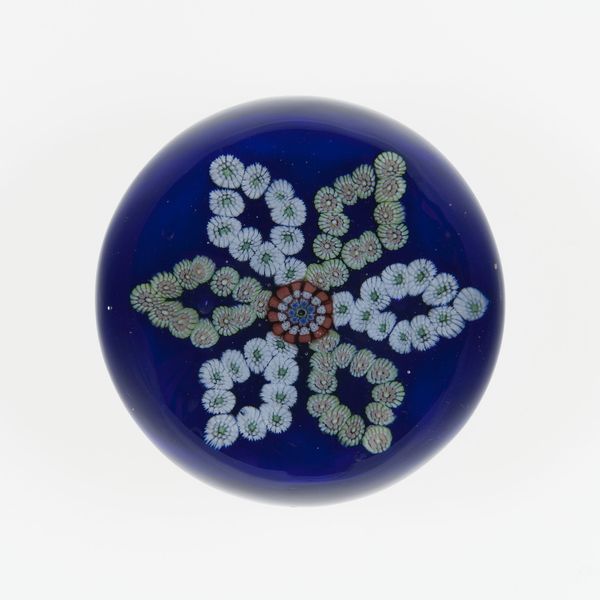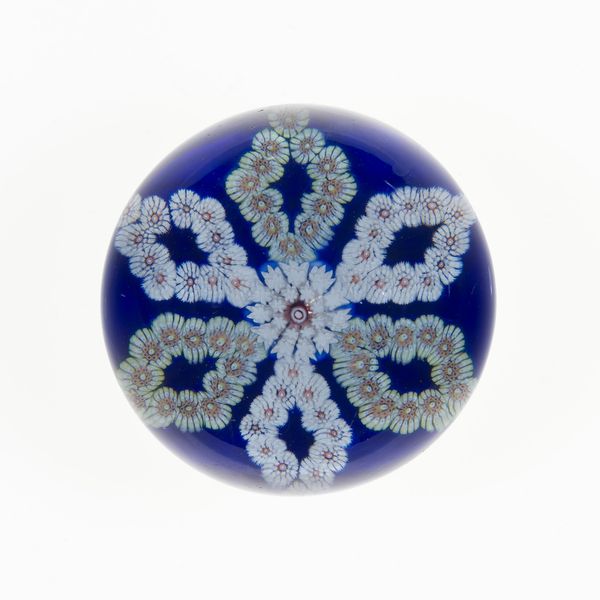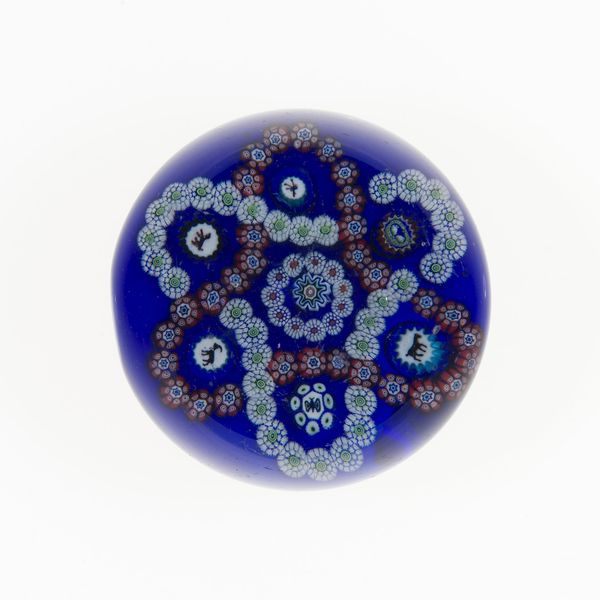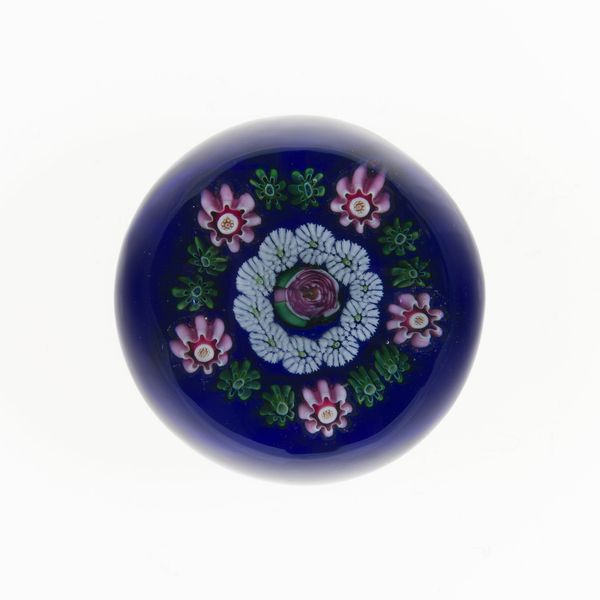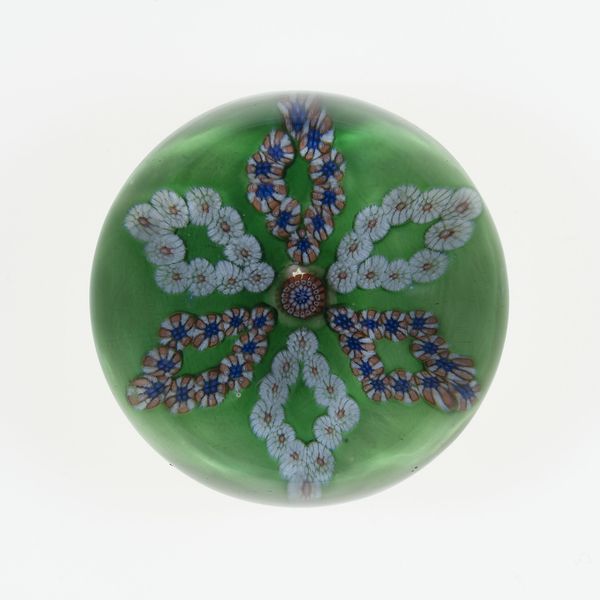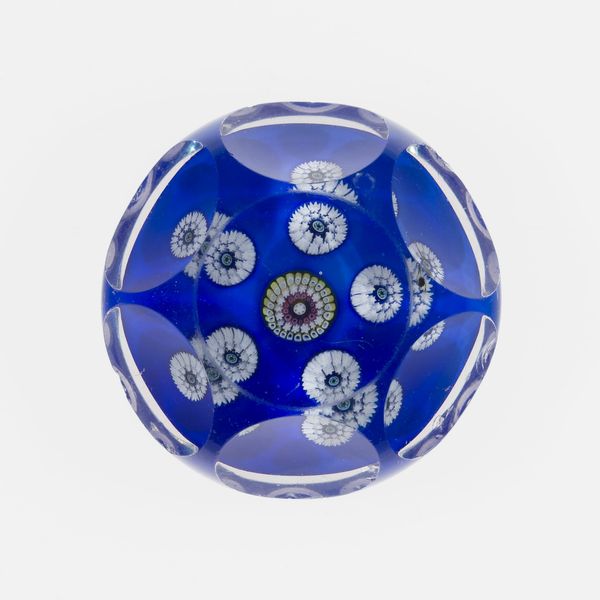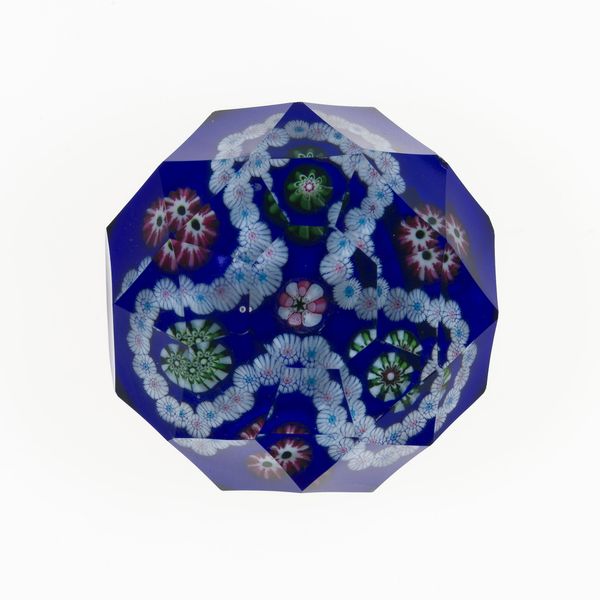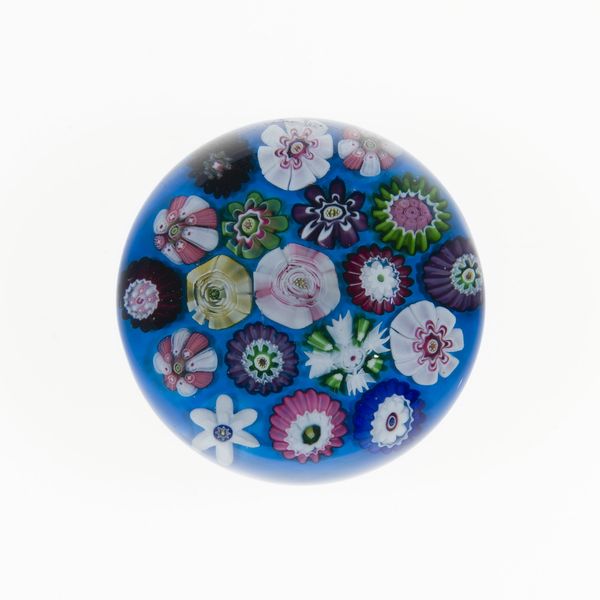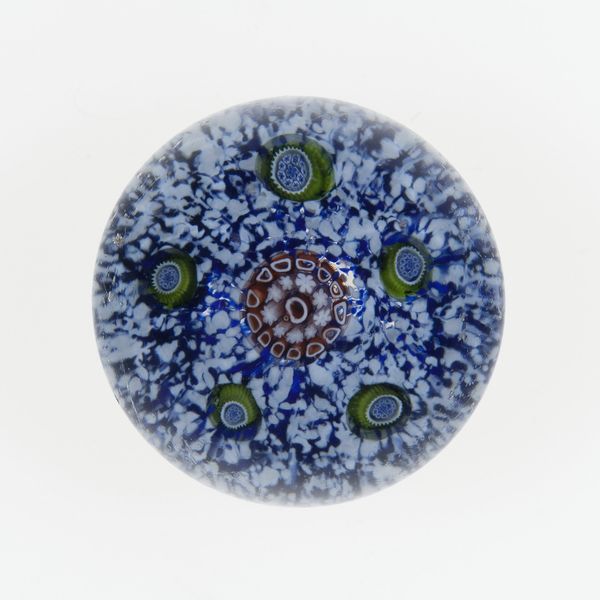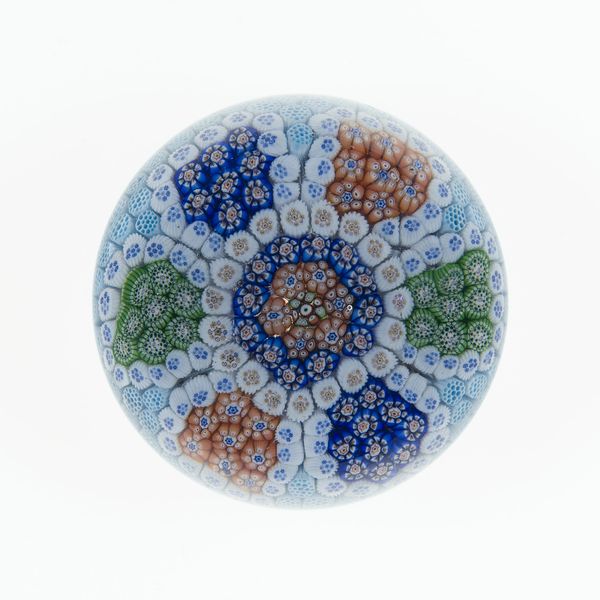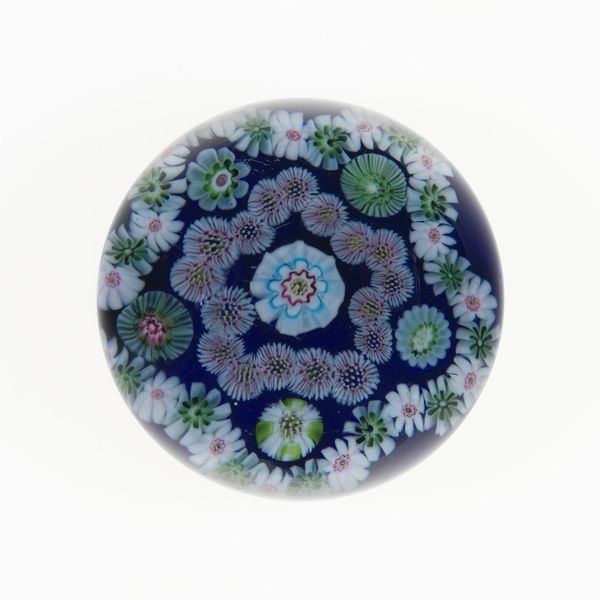
Dimensions: Diam. 7.8 cm (3 1/8 in.)
Copyright: Public Domain
Curator: This is a stunning piece, simply titled "Paperweight." It was crafted by the Clichy Glasshouse sometime in the 19th century. What’s your first impression of this delightful object? Editor: I'm immediately drawn to the rich, almost royal blue of the glass and then captivated by the intricate floral design trapped inside. It's like a preserved moment of beauty. The geometry is intriguing and somewhat unexpected, a beautiful juxtaposition between nature and mathematics. Curator: That resonates. Paperweights like this, especially those from renowned makers such as Clichy, represent not only exquisite artistry but also the burgeoning industrial and consumer culture of the 19th century. What statements were these paperweights hoping to make? Editor: Well, in terms of symbols, the flower is so incredibly resonant, particularly with a shape suggestive of a rosette. Historically and across cultures, we see flower imagery in everything from heraldry to religious iconography, signifying ideas as varied as nobility, sanctity, and rebirth. That specific rosette structure mirrors so many cosmic maps, even. Do we know if this factory hired specialized pattern designers? Curator: While we don't have records naming individual designers, it's important to consider the socio-economic implications of luxury items. Artisans were often anonymized laborers, and these paperweights might’ve also been used to project power and wealth. Editor: Absolutely, luxury serves specific social functions. I'm also compelled to consider how the act of encasing these floral designs speaks to control and preservation, a desire to hold onto fleeting beauty within a seemingly stable form. Does this impulse reflect the insecurities present in an era defined by such tumultuous shifts? Curator: Exactly. The aesthetic perfection and order that you're pointing out also stand in contrast to the societal chaos of the period. The pressure to contain, classify, and control also applied to societal constructs as well. Gender roles, class structures—even what defines 'nature'—were intensely debated and defended during this era. These paperweights are lovely, yet they also quietly underscore the immense pressures beneath the veneer. Editor: Fascinating. I can see that now, thinking about it this way definitely deepens my appreciation of this small treasure. Curator: And for me, revisiting the history interwoven into even a functional object like this reminds me to always interrogate aesthetics and not take beauty at face value.
Comments
No comments
Be the first to comment and join the conversation on the ultimate creative platform.
